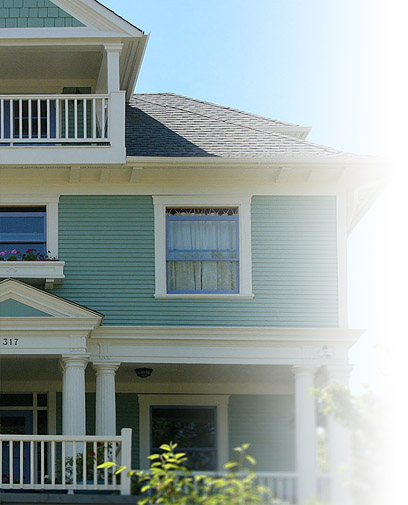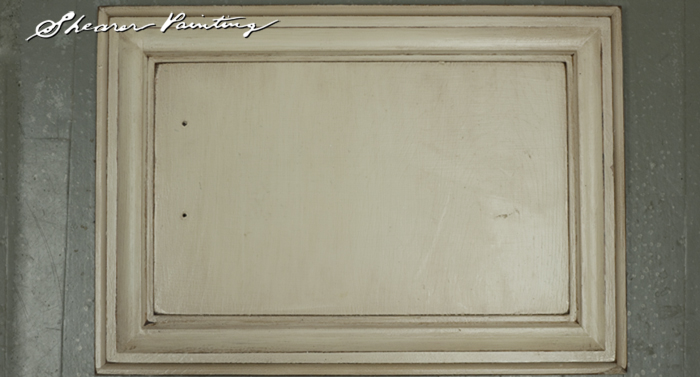

The picture above is a sample of an Antique Glaze on a kitchen Cabinet. • Glaze is a clear medium to which you add colorants, tints, or paints. Glaze allows for a translucent look and stays wet long enough "open" to work/apply even desired patterns.
• Shearer use oil stain, water colorants, and artist pigments to achieve the glaze we are looking for.
•We apply the glaze liberally with a natural bristle brush, working it well into the grain and corners. Then wipe it off with clean, lint free rags until we get the effect wanted. Completing one section at a time and standing back periodically to make sure work is fairly consistent and are not getting some sections overall too dark.
• The method for glazing painted cabinets is similar except we will want to use acrylic water based glaze instead of oil, and either paint or straight colorant in the mix. Generally you will want to choose a color several shades darker than your cabinets.• When we wipe off the excess, the remainder will settle in corners and edges, and give an overall hand-rubbed look. It gives cabinets a charming, naturally aged appearance.
Step 1-Glazing Stained Cabinets
For light colored, wood stained cabinets that you want to darken, we will use an oil-based glaze. Oil-based glaze is a clear medium that you add color to. This glaze gives you a translucent look and is easy to work with because it takes longer to dry than some water based glazes. This allows us to take our time and get the effect you want.Step 2-Glaze Color
To an oil-based glaze, we will add some oil stain that is the color you prefer.Step 3-Preparation
Using a degreasing cleaner or denatured alcohol, we will clean all cabinet surfaces we plan to paint and remove all handles, hinges, and knobs from cabinet doors and drawers.Step 4-Glaze Application
Using a natural bristle brush, we work the glaze into the cabinet's surfaces and corners. When finished, we wipe the glaze, one section at a time, using a clean, lint-free rag until we get the desire look.Step 5-Glazing Painted Cabinets
Glazing painted cabinets is much the same as glazing stained cabinets, except that in painting over a painted surface we use a water based glaze, instead of oil based that you use with stain.Step 6-Finishing
In wiping off excess glaze, you'll notice it leaves some of the glaze in corners and edges. You'll also find that these places, when left with the extra glaze, it will give the painted area a naturally aged appearance that you will find quite charming.